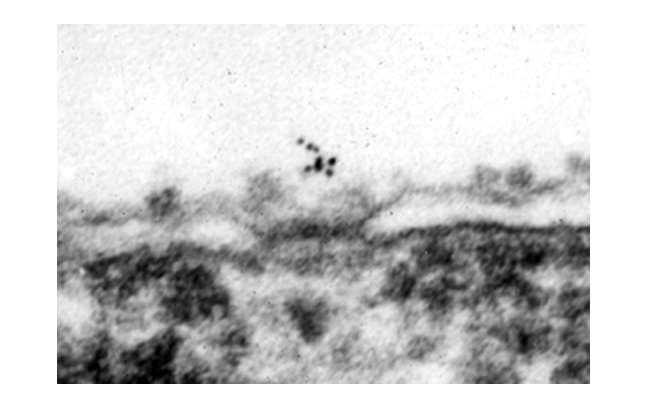Scientists: Nuclear Pore Complex
Due to similarities in structure, mass and symmetry, vaults have been proposed to be a component of the nuclear pore complex (NPC) known as the central plug or NPC transporter. STEM has been used to determine the mass of this central plug to be 13 MDa, identical to the mass of a vault. Further analysis of the plug indicates that, like a vault, it has a diameter of 30-35 nm and is composed of two equivalent halves, each with eight-fold symmetry. Diane Chugani and Nancy Kedersha utilized immunofluorescence and immunoelectron microscopy to localize a subpopulation of vaults to nuclear membranes at locations at or near nuclear pore complexes (Chugani et al., 1993).
The figure (right) shows isolated rat liver nuclei stained with anti-vault antibody (panel A). The punctate staining of the nuclear membranes can be compared to that seen when nuclei are stained with an anti-NPC antibody (panel C). No staining is seen when preimmune antibody is used (panel B). When nuclei were reacted with anti-vault antibody then stained with gold-conjugated secondary antibody and examined under the electron microscope, gold particles could be found to decorate the NPC (below).
These studies suggest a functional relationship between vaults and NPCs involving a physical interaction between the two. This interaction could be a docking between vaults and NPCs, with vaults themselves possibly constituting the nuclear pore plugs. Unequivocal substantiation of vaults as NPC plugs will require purification and characterization of the plug proteins and a direct comparison to vault proteins. The great abundance of vaults in the cytoplasm and the localization of some vaults at NPCs has led to the proposal that vaults function in nucleo-cytoplasmic transport. A transport role for vaults is now under new scrutiny in light of the association of vaults with the multidrug resistance phenotype (see MDR)and considering their hollow interior (see cryoEM).

